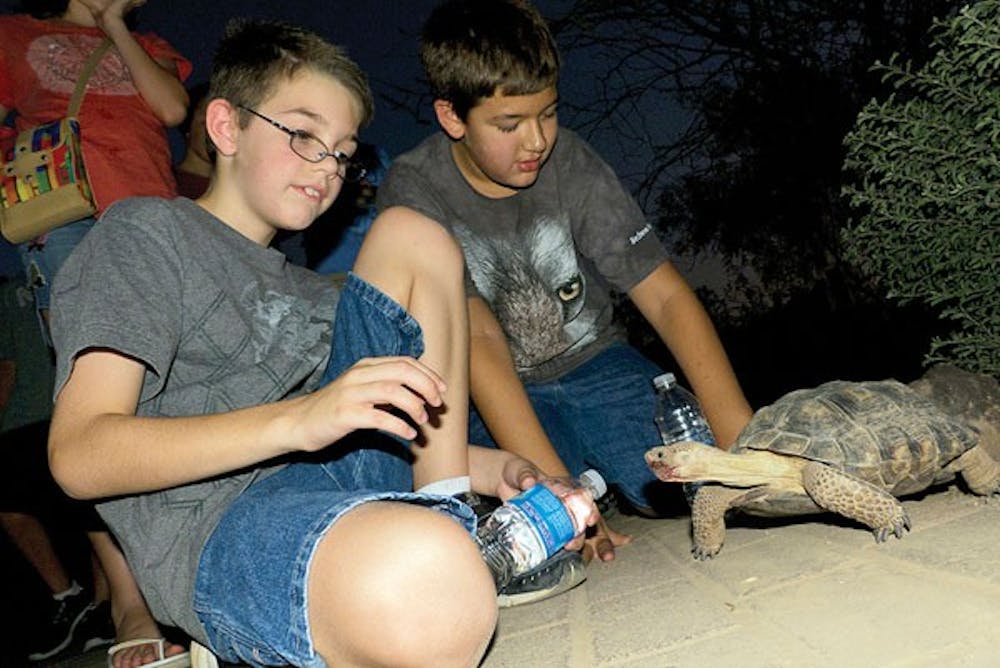 Children attending a flashlight tour at the Desert Botanical Garden stop at a station to visit a desert tortoise. (Photo courtesy of Desert Botanical Garden)
Children attending a flashlight tour at the Desert Botanical Garden stop at a station to visit a desert tortoise. (Photo courtesy of Desert Botanical Garden)Every summer from May through August, the Desert Botanical Garden hosts what they advertise as “Garden Flashlight Tours.”
On Thursday and Sunday evenings during the summer, families are allowed to wander from one side of the garden to the other exploring the various stations, with only a few areas in the garden cordoned off.
Manned by volunteers at the facility who talk at length about commonplace sights in the desert — geckos and toads, tarantulas and scorpions, Palo Verde trees and Saguaro cacti — the night tours shine a magnifying glass on the real natural inhabitants of Arizona, providing a personalized visual touch that a taped tour of the facilities could not.
At the beginning of the trail, visitors find a station with the inquisitive title, “What is a Desert?” The experts’ definition explains that states with less than 10 inches of rain annually are considered deserts. Arizona, on average, gets about 7 inches of rain. New York state, by comparison, sees about 50 inches.
Hidden by the adjacent Papago Park and flanked by neighborhoods and the nearby Red Mountain Highway, the garden is the Arizona desert in miniature. Because it is tucked away by desert surroundings, to reach the garden by automobile, visitors need to drive down a curvy stretch of road that connects with the park and the Phoenix Zoo.
While children are distracted by the novelty of exploring the desert by flashlight at night and go wild over the sights of lizards and toads, the information imparted by expert volunteers gives mature visitors knowledge they weren’t likely to have had before, even if they were long-term Arizona residents. Volunteers relinquish various pieces of trivia and the home applications for the bark and pods from desert trees found on the tour.
Visitors will also admire the view of the area, the stillness of night only broken by the occasional roar of airliners or helicopters — something plentiful in Tempe.
Ostensibly meant to capture kids' attention for a few hours between dusk and bedtime, the tour also ignites a curiosity in them with the various stations found throughout the garden.
Guests will be intrigued by the exoskeletons of scorpions and the overflowing uric acid they produce that make them easy to spot with UV lights indoors. Anything that can dislodge apathy and stir a search of the unknown can’t be all bad.
Reach the reporter at tccoste1@asu.edu




